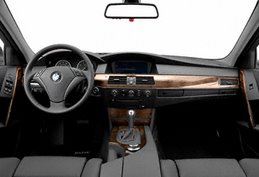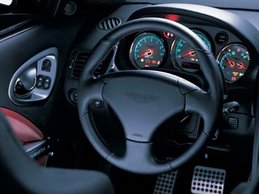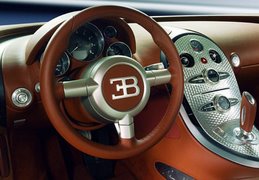 2008 Cadillac CTS - GM’s confidence is so high that it flew a passel of 2008 CTSs from Detroit to Germany—at a cost between $20,000 and $30,000 each—to be test-driven by the motoring press on the highly challenging Nürburgring racetrack, just as it did six years ago with the original CTS, the first model to bear the knife-edged art-and-science design language of 21st-century Cadillac.
2008 Cadillac CTS - GM’s confidence is so high that it flew a passel of 2008 CTSs from Detroit to Germany—at a cost between $20,000 and $30,000 each—to be test-driven by the motoring press on the highly challenging Nürburgring racetrack, just as it did six years ago with the original CTS, the first model to bear the knife-edged art-and-science design language of 21st-century Cadillac.Since the CTS spent extensive development time on the tortuous 12.9 miles of Nürburgring pavement, we asked lead development engineer Rob Kotarak how many laps he’d turned there. Quite a few, he said, but all of them from the passenger seat. That’s because he hasn’t acquired GM’s top driving certification and therefore is not allowed to drive at the German track. Meanwhile, a first-timer from Car and Driver gets to lap freely—what was that about a bureaucracy? Just so you know, Mr. Kotarak, your car is quite adept. Despite our inexperience with the Nürburgring (read “driving like a hack”), the CTS was planted and predictable and never did anything unexpected.
Tops on the CTS’s mechanical upgrade list is a 304-hp, 3.6-liter direct-injection DOHC V-6 that also resides in the ’08 STS. This new engine is, for now, the top choice and will likely cost $1000 more than the base non-direct-injected 258-hp version of this 3.6-liter mill that is carried over from the outgoing model. The old base engine, a 210-hp, 2.8-liter V-6, is dropped for the U.S. All-wheel drive is offered for the first time, but only with an automatic transmission.
In relaxed driving, the new V-6 is smooth and quite muted, as Cadillac has attacked the noise problem in just about every way—triple door seals, sound-deadening covers on the engine and high-pressure fuel pump, and numerous other acoustical treatments. But push a little harder, and the engine starts to sing at about 4000 rpm, pulling enthusiastically to the 7000-rpm redline. Our 3
 04-hp manual ran 0 to 60 mph in 5.8 seconds and blew through the quarter-mile in 14.6 at 97 mph, more than a second quicker in the sprint and 0.6 second fleeter through the quarter than the last non-V CTS we tested.
04-hp manual ran 0 to 60 mph in 5.8 seconds and blew through the quarter-mile in 14.6 at 97 mph, more than a second quicker in the sprint and 0.6 second fleeter through the quarter than the last non-V CTS we tested.The suspension retains the same basic aluminum-intensive control-arm-front and multilink-rear suspension, with slightly modified geometry, but it only took the three characters “PS2”—as in Michelin Pilot Sport PS2 tires—to clue us in to how serious Cadillac is about the sporting nature of the new CTS. This is GM’s first time using these summer-only, super-performance street tires—arguably better tires than the Goodyears the Corvette wears—which are generally used on all-out sports cars like the Porsche 911 and Cayman.
These tires, although in an almost too modest 235/50R-18 size (Cadillac promises larger wheels are coming), are a part of the most aggressive suspension package, called FE3. All three suspension choices use the same spring rates, but the FE3 option includes larger brakes and anti-roll bars as well as revised dampers. The others, FE1 and FE2, ride on all-season tires.
We spent most of our three days in Germany with the sportiest FE3 package, and the most impressive thing about the ’08 CTS is its ride-and-handling balance.
On the street, our initial impression is that the CTS is more comfortable than a Sport-package-equipped BMW 3-series or Infiniti G35 without giving up much ultimate performance, although rain during our testing day kept us from verifying Cadillac’s skidpad claim of 0.86 g. The FE2 car we briefly drove didn’t feel much softer, but over an undulating stretch of unlimited autobahn, it moved around enough to make us want the stiffer setup.
A revised version of the Aisin six-speed manual carries on with modified ratios to alleviate a previously large gap between second and third gears. But even with
 a new shift linkage for shorter throws, the manual isn’t nearly as fluid as those from BMW. The CTS’s ho-hum shift action teams with an abruptly engaging clutch and a slightly too high center console to make the row-your-own option less than satisfying. Add a drink in the cup holder (directly behind the shifter) to that combo, and you’re constantly whacking it with your elbow. Suddenly, BMW’s dash-mounted cup holders make a lot of sense.
a new shift linkage for shorter throws, the manual isn’t nearly as fluid as those from BMW. The CTS’s ho-hum shift action teams with an abruptly engaging clutch and a slightly too high center console to make the row-your-own option less than satisfying. Add a drink in the cup holder (directly behind the shifter) to that combo, and you’re constantly whacking it with your elbow. Suddenly, BMW’s dash-mounted cup holders make a lot of sense.The new well-behaved six-speed automatic—it’s no wonder BMW buys this GM gearbox—will likely be the more popular choice anyway. It offers smooth shifts when you want them, but thump the throttle, and it gives a prompt multigear kickdown.













No comments:
Post a Comment